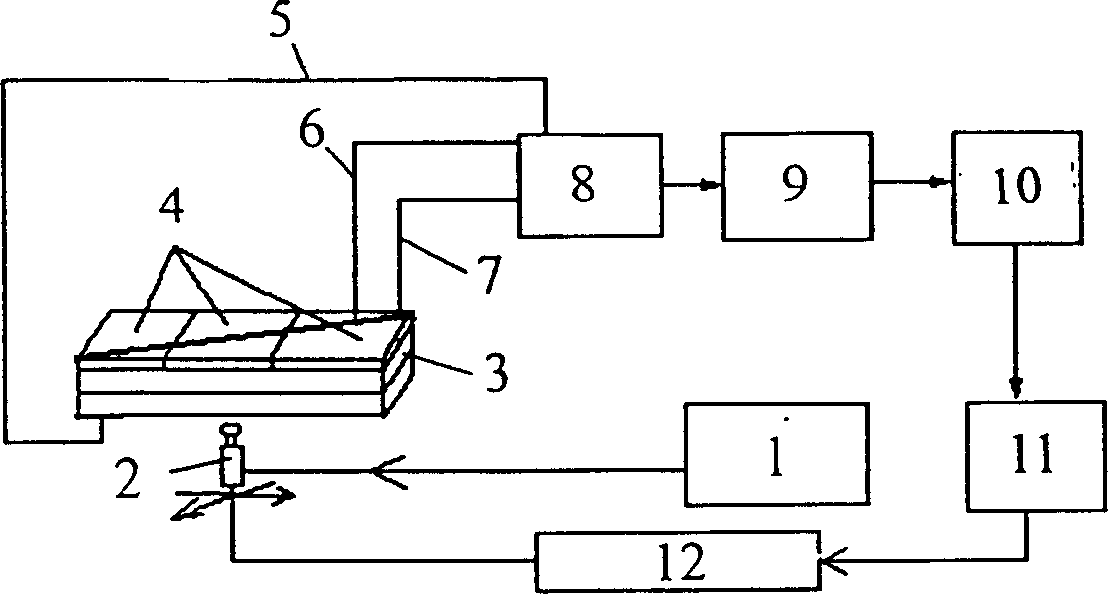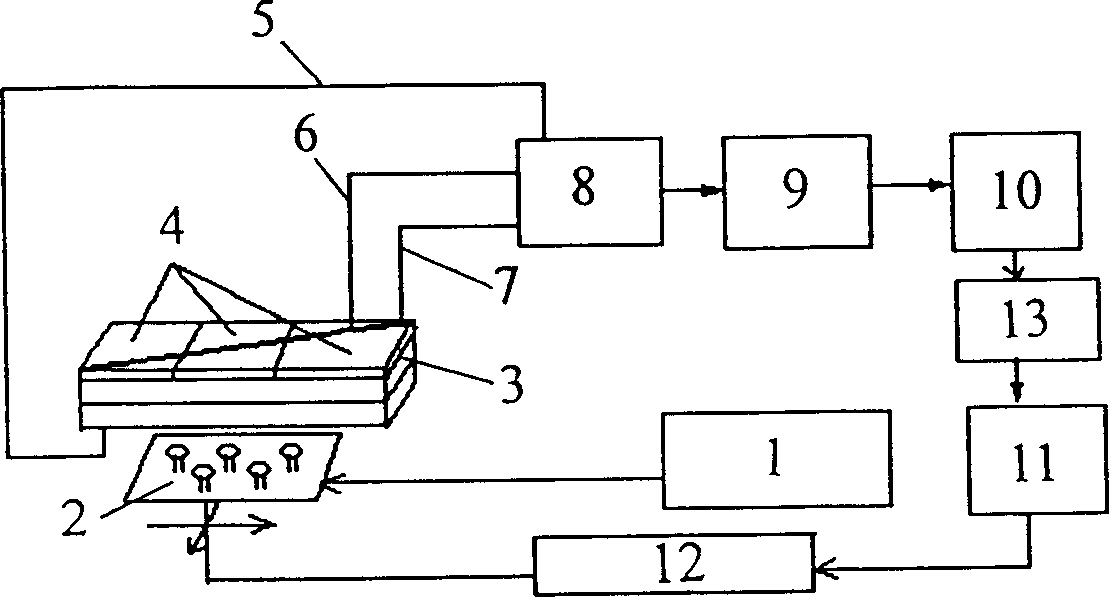Multiple light source addressed potential sensor and parallelly processing gas image test set
A potential sensor, parallel processing technology, applied in the direction of electrochemical variables of materials, etc., can solve the problem of low detection speed, and achieve the effect of parallel processing and fast processing
- Summary
- Abstract
- Description
- Claims
- Application Information
AI Technical Summary
Problems solved by technology
Method used
Image
Examples
Embodiment Construction
[0025] Multiple light sources with the same wavelength and different modulation frequencies are used to excite the sensor at the same time, that is, each light source addresses different sensor areas at the same time, so it is called MLAPS (Multi-light Addressable Potentiometric Sensors). On this basis, the parallel processing technology is used to realize the rapid image detection of the measured gas. For this purpose, a series of theoretical and detection technical problems must be solved, because the sensor only produces photoelectric effect for light with a certain wavelength or certain excitation energy, and Under the excitation of light with a certain excitation wavelength, the frequency of its response photocurrent is the same as the modulation frequency of the excitation light source. However, the frequency response characteristics of the LAPS sensor to the excitation light source have a certain range. Generally, the frequency of an excitation light corresponding to th...
PUM
 Login to View More
Login to View More Abstract
Description
Claims
Application Information
 Login to View More
Login to View More - R&D
- Intellectual Property
- Life Sciences
- Materials
- Tech Scout
- Unparalleled Data Quality
- Higher Quality Content
- 60% Fewer Hallucinations
Browse by: Latest US Patents, China's latest patents, Technical Efficacy Thesaurus, Application Domain, Technology Topic, Popular Technical Reports.
© 2025 PatSnap. All rights reserved.Legal|Privacy policy|Modern Slavery Act Transparency Statement|Sitemap|About US| Contact US: help@patsnap.com



